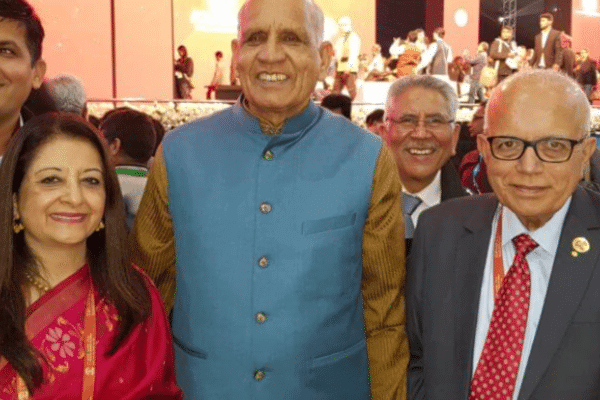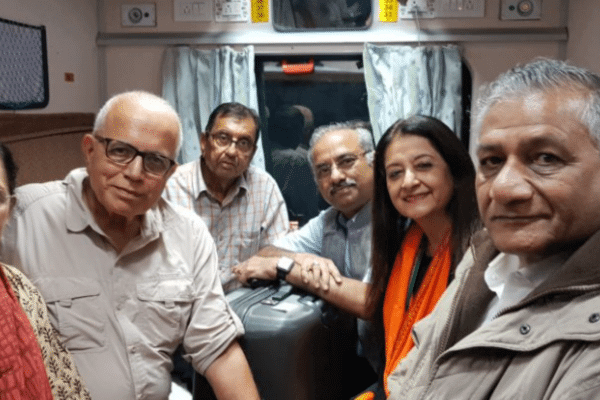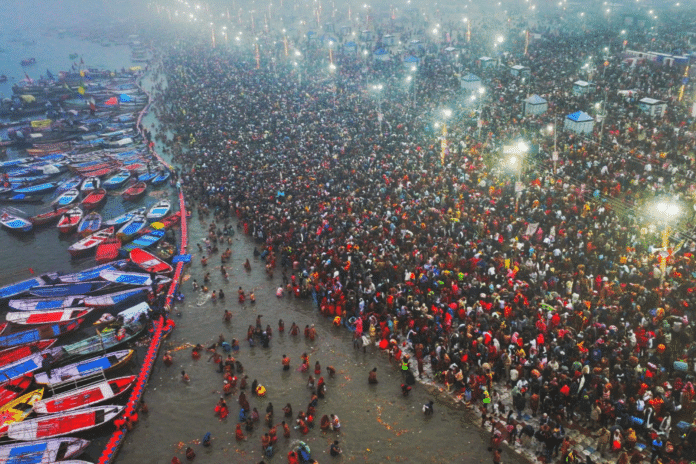Mala Mehta OAM fondly remembers participating in the 2019 Kumbh Mela (Festival of the Pitcher). Even though she never placed much importance on religious rites or rituals, she jumped at the chance to attend it.
“I can’t express why so many are attracted to going to the Ganges. Maybe because the notion that we have to worship the river has been instilled in us from birth,” she says.
For the uninitiated, the ‘Festival of the Pitcher’ might sound absurd, but it is rooted in Hindu mythology. According to myth, four drops from a pitcher held by the Gods resulted in four holy rivers revered every 12 years during the Kumbh Mela. This includes the Ganges-Yamuna-Saraswati confluence located in Prayagraj, the Godavari in Nashik, the Shipra in Ujjain and the Ganges in Haridwar.
Mehta went to the festival in 2019 after winning the Pravasi Bharatiya Samman Patra for her excellence in teaching, becoming one of 240 million people who made the pilgrimage.

However, the festival is expected to be bigger than ever this year, being the 12th time and 144th year in which the festival is held in Prayagraj. Thus, this year’s festival has earned the name Maha (Great) Kumbh Mela and has attracted a record-breaking 400 million people.
While images of the crowds in this year’s Mela are enough to make one feel a sense of claustrophobia, they fail to portray the sense of inner peace felt by the pilgrims once they arrive at the sacred site of Prayagraj. It’s something that even a previous attendee like Mehta struggles to put into words.
“It really brings out your sense of spirituality and I think it’s because you are in a holy city that most have dreamed of going to all their life. But to be honest, you can never properly understand what I felt unless you go experience it yourself,” she says.

Mehta participated in the pilgrimage to gain a sense of spiritual calm, but the experience offered her more than she expected.
“People continue to live in the ancestral havelis located close to the site and so you begin to understand the continued practical importance of this sacred space to people. I ended up reading a lot about the ancient city to understand more about why this tradition started,” she says.
Whilst the Mela is a uniquely Hindu experience, Mehta couldn’t help but notice the imprint left by other religions during her journey to the sacred site.
“It was so interesting to see the deep blend of culture and religions in India. You can go, for example, to the Bodhi tree where Buddha is said to have given his first sermon. And then you can also see the Islamic influences within the city because there are a few mosques. So, you can hear the azan and you can see the aarti,” she laughs.
Underpinning this long journey from Varanasi to Prayagraj was a deep sense to pass on all that she had learnt to her young students.
View this post on Instagram
“Having experienced it, I was able to come back and explain in detail what I had seen to them, so that if they would like to go back and do the same, they would have a clearer motivation for doing it,” she says.
And it’s likely that these youngsters will have a smoother experience. Even in 2019, Mehta was amazed to see the wide range of amenities available to ensure the comfort of pilgrims.
“Everything has been commercialised to make it easier and convenient for people. For example, you can pay to stay within a tented community during the trip. The organisers also arranged showers and public toilets to accommodate thousands of people. Regardless of whether you are on a private or public tour, you have access to these amenities,” she recalls.
This year, the government has spent over 1 billion dollars towards 160, 000 tents, 98 more trains, 50,000 police and security personnel, all in anticipation of larger crowds.
This money was also spent on the latest in technology, including underwater drones capable of diving up to 100m to ensure round the clock surveillance as well as a Kumbh Mela app to help devotees navigate their way through the temples spanning 40 square kilometres.
To Mehta, there are few opportunities for such a dynamic and large community to be able to embrace their spiritual selves unencumbered whilst respecting the life-giving force of the Ganges.
“If God takes me there once again, then I would make sure to take my whole family with me.”
READ MORE: Dushyanth Sridhar: ‘Every religion must be given space to thrive’



